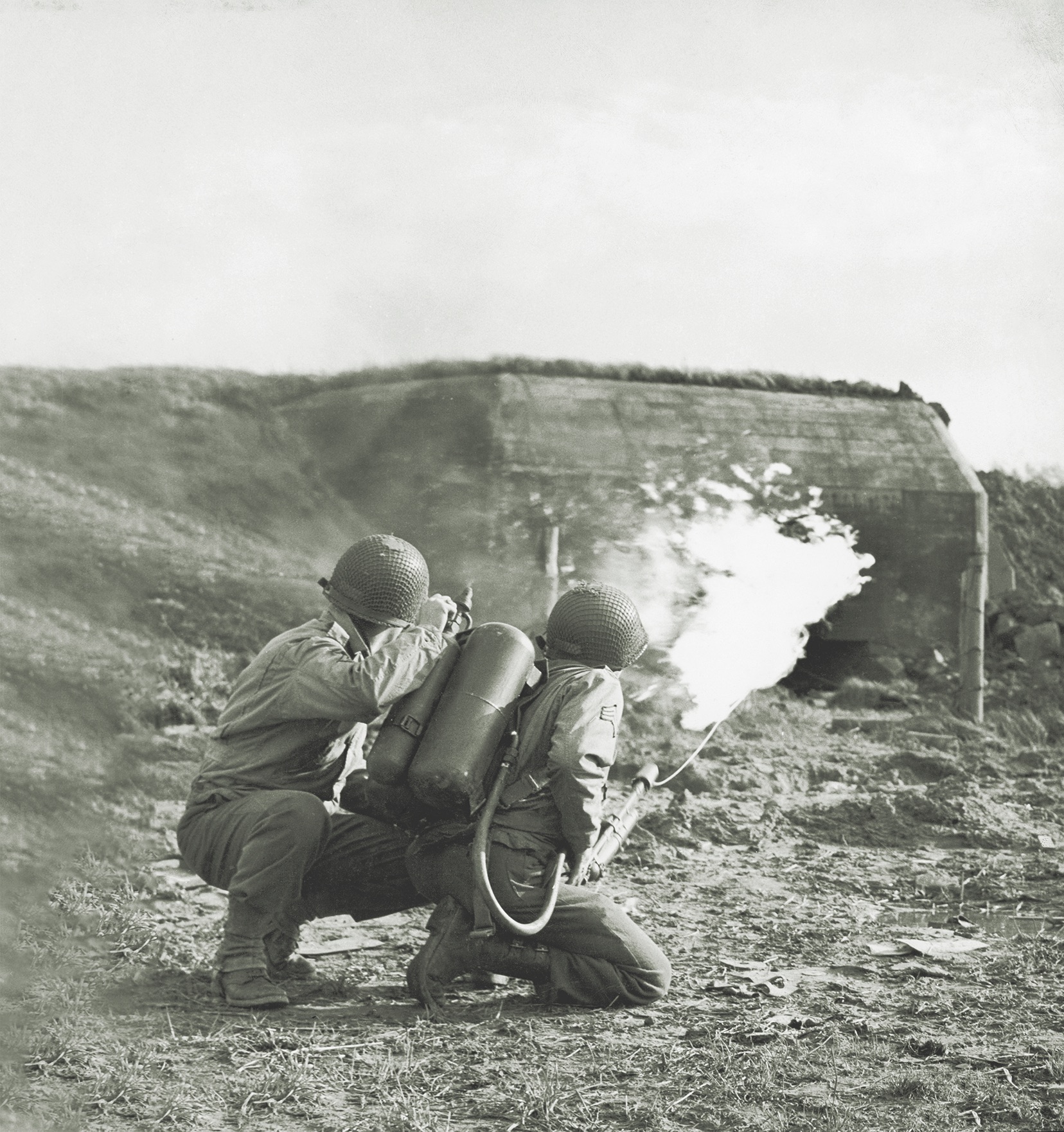From 1943 onward, requests for the incendiary substance poured in as commanders observed the chemical weapon’s lethal efficacy.
Q: When and where was napalm first used in the European and Pacific theaters, and were there particular uses unique to either theater?
—Paul Minault, San Rafael, Calif.
A: Invented in 1942, napalm saw combat for the first time in Sicily in August 1943, when American troops incinerated a wheat field believed to shelter Germans. In the Pacific, U.S. soldiers first used napalm on December 15, 1943, in flamethrowers used to burn Japanese defenders out of a cave on Pilelo, a tiny island northeast of New Guinea.
Air bombardments followed in short order. Airmen mixed napalm powder with various combinations of oil and gasoline, creating firebombs. Standard Oil’s M-69 napalm bombs saw Pacific combat for the first time on February 15, 1944, when the Seventh Air Force attacked the town of Pohnpei, capital of the eponymous Micronesian island. A total of 118 tons of bombs hit the island over the next 11 days.
Requests poured in as commanders observed napalm’s effectiveness. Bombs quickly, and permanently, surpassed flamethrower requisitions. Napalm firebombs proved to be “an excellent tactical weapon to use against supply dumps, troop concentrations, convoys and vehicles,” according to an official history. In Europe, 13,000 M-47 napalm bombs, mixed with explosives, gutted a German Focke-Wulf aircraft plant at Marienburg in October 1943; another napalm attack the same month critically damaged ball-bearing plants at Schweinfurt. Napalm assaulted German forces caught in the Falaise Pocket at the end of the Battle of Normandy in August 1944. Ultimately, more than 500,000 napalm bombs fell on Germany: perhaps 10,000 tons of flaming gel. By December incendiaries, including napalm, accounted for 40 percent of all U.S. bombs dropped in Europe.
The U.S. used napalm to immolate entire cities in Japan. On the night of March 9, 1945, about 690,000 pounds of flaming napalm from M-69 bombs burned 15 square miles of central Tokyo. A supernatural open chimney of flames and smoke rose 18,000 feet over the city amid gale-force winds. Official tabulations recorded 87,793 people dead from the firestorm—more than from the nuclear explosions at Hiroshima or Nagasaki—and 40,918 injured, over 1 million homeless, 267,171 buildings wrecked, and 18 percent of Tokyo’s industrial area and almost two-thirds of its commercial district destroyed. Airmen gagged and vomited from the smell of burning flesh penetrating their B-29s. Tail gunners saw a red glow from the burning city 150 miles away on the flight home. ✯
—Robert M. Neer, author of Napalm: An American Biography
Send queries to: Ask World War II, 901 N. Glebe Road, 5th Floor, Arlington, VA 22203 or email: worldwar2@historynet.com
This article was published in the April 2021 issue of World War II.





